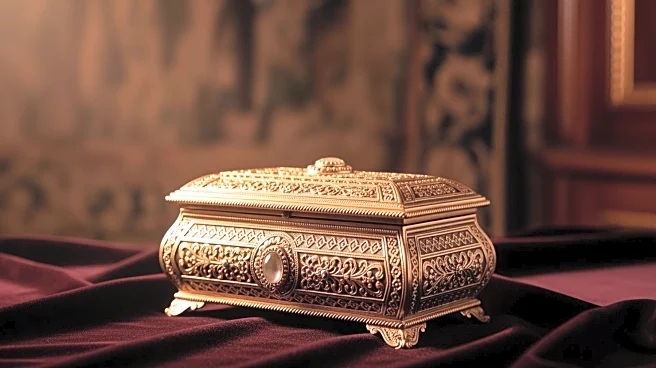What's Happening?
A rare Indian jewellery casket depicted in two paintings by Johannes Vermeer has been identified, shedding light on the artist's connections. The discovery, made by Alexandra van Dongen, a curator at Rotterdam’s
Boijmans Van Beuningen Museum, is detailed in her upcoming book. The casket, an Indo-Portuguese piece from the 17th century, appears in 'Mistress and Maid' and 'A Lady Writing'. It is believed to have been owned by Vermeer’s patron, Maria de Knuijt, a major shareholder in the Dutch East India Company.
Why It's Important?
This discovery highlights the cultural and economic exchanges between Europe and Asia during the 17th century, as facilitated by the Dutch East India Company. It underscores the influence of global trade on European art and the role of patrons in shaping an artist's work. The identification of the casket provides new insights into Vermeer's artistic process and the historical context of his paintings. It also emphasizes the importance of interdisciplinary research in uncovering art history's hidden narratives.














